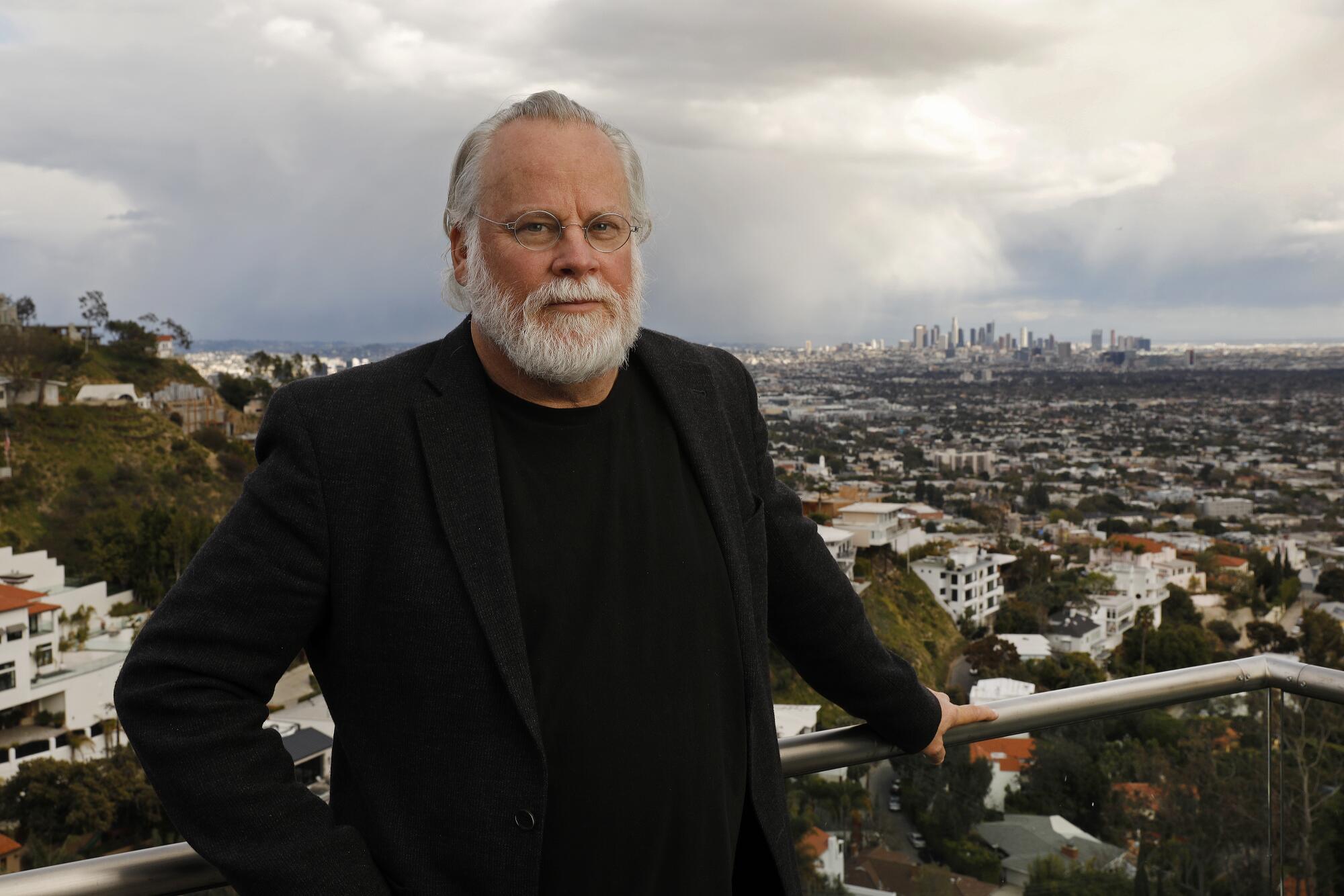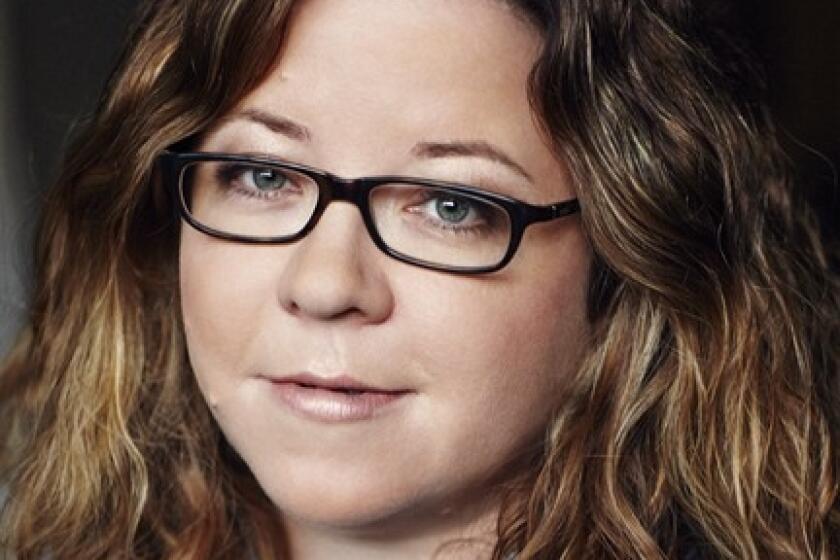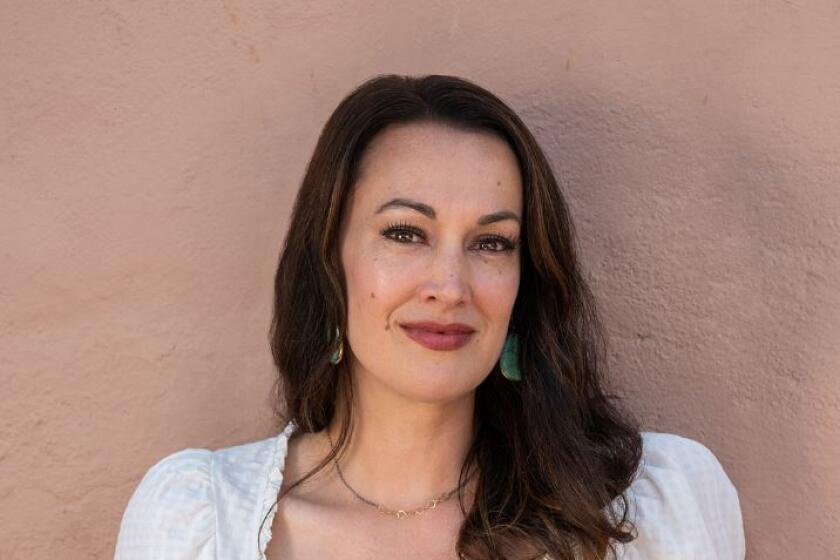
- Share via
When we first meet Det. Hieronymous “Harry” Bosch, in the 1992 Michael Connelly novel “Black Echo,” he is in his early 40s, working homicide out of the Hollywood Division, and decidedly out of favor with his higher-ups at the LAPD. He is a loner, angry and impulsive.
Recently booted from the elite Robbery-Homicide Division after shooting and killing an unarmed man (who also happened to be a serial killer), Bosch has been put on a short leash. But even a top-heavy, hierarchical bureaucracy like the Los Angeles Police Department can’t tamp down Bosch’s need to solve murders and make predators pay.
Drawing on intelligence, intuition, methodical police work and an unquenchable drive to know the truth, Bosch solves two murders and the underlying crime that sparked them, consequences be damned.
In “The Waiting,” Connelly’s latest book, Bosch is in his 70s, retired and in failing health. He has become an icon, respected in the circles he cares about; reviled in those he doesn’t. But he is at heart the same detective we met 30 years earlier. He has slowed down and learned from his mistakes, but he is still solitary, still infuriating to those trying to supervise him, still driven and brilliant. And more than ever, he is a cop you can’t help but root for.

“The Waiting” is a milestone of sorts for Bosch. On his website, Connelly lists it as the 25th book in his “Harry Bosch Series.” Whether this is really a key anniversary for the detective is a little squishy, since he also appears in other of the author’s book series. But I decided to accept Connelly’s tally and celebrate Bosch’s silver jubilee by rereading all 25 books in order, something you might consider doing, too, if you love mystery novels and Los Angeles.
Why? Because Bosch is a complicated, maddening, impulsive, brilliant, beautifully drawn character. Because the books are gripping, with a momentum that starts on the first page and builds steadily to the last. And because Connelly describes Los Angeles as well as any writer ever has.
Connelly once told an interviewer that he would love to ask Raymond Chandler about Chapter 13 of Chandler’s novel “The Little Sister.” It describes a drive through L.A., and Connelly said he’d ask Chandler “how he pulled that off” and “tell him that that short chapter of his was what made me want to become a writer.”
That slice of “The Little Sister” is stunning. Chandler’s detective, Philip Marlowe, describes “the fast boys in stripped down Fords,” the “tired men in dusty coupes and sedans” and “the great fat solid Pacific trudging into shore like a scrubwoman going home.”
Does Connelly’s prose reach the literary heights of Chandler’s? Not exactly. But that’s not the point.
In journalism, editors trot out this advice to writers: You have to take the reader to the dance. That’s what Connelly does. He sets us right down on the dance floor of Los Angeles.
In the short stories of ‘Highway Thirteen’ that span almost 80 years, Fiona McFarlane explores the lives of people affected by a spree of killings in Australia.
In “The Dark Hours,” he describes the midnight “gunshot symphony” on New Year’s Eve. “It was like a bag of popcorn cooking in a microwave. A few pops during the final countdown of the year and then the barrage. ... It didn’t matter that what goes up must come down. Every new year in the City of Angels began with risk.”
In “The Last Coyote,” we visit Mount Olympus, a “gaudy outcropping of modern Roman-style homes above Hollywood,” where oversize houses are “jammed side by side as close as teeth.”
Bosch’s relationship with Los Angeles is complicated. He describes it in “A Darkness More Than Night” as “a city with more things wrong than right. A place where the earth could open up beneath you and suck you into the blackness.”
But L.A. is also the home he loves, “a place to begin again … the city of the second chance.” He is never contemptuous of Los Angeles the way Chandler is.
If Bosch’s worldview is dark, he comes by his perspective honestly. When Bosch was born, his mother, a prostitute, chose for her son the name Hieronymous Bosch, after the 15th century phantasmagorical painter. And the world he grew up in was every bit as disturbing as his namesake’s artwork.
At 10, Bosch was taken from his mother and put into the foster care system. A year later, his mother was murdered. He enlisted in the Army at 17 and was sent to Vietnam, where he became a tunnel rat, assigned to destroy the labyrinthine underground passageways constructed by the Viet Cong.
Most tunnel rats didn’t make it home. Bosch did, but not without damage. As someone says about him in “A Darkness More than Night”: “You don’t go into the darkness without it going into you and taking its piece.”
By book four of the series, “The Last Coyote,” Bosch’s demons have taken firm control. He’s living illegally in his house in the Hollywood Hills, which was red-tagged after the 1994 earthquake, drinking heavily and sleeping poorly. And, after physically assaulting his lieutenant in the Hollywood Division, he has been suspended and ordered to see an LAPD psychologist. The therapist asks Bosch if he has heard of post-traumatic stress syndrome. “I have to say,” she concludes, “that you are a walking, talking example of this disorder’s symptoms.”
Journalist Jesse Katz traces the colliding forces behind the shooting: Central American immigration, harsh economics, Southern California culture.
The therapy is helpful, as is solving the murder of his mother, and Bosch resumes his job. But he never travels easily in the world.
As a policeman, Bosch starts from a position that “everybody counts or nobody counts,” a maxim repeated throughout the series. He works as hard to solve the murder of a teenage hustler in Hollywood as that of a city councilman’s son. But that’s not to say Bosch is always an admirable cop.
He breaks laws repeatedly in the service of what he considers justice, roughing up unwilling witnesses, searching residences without warrants and breaking into homes and businesses without a qualm.
If Bosch doesn’t mellow, he does grow over time, especially in how he learns to love and be loved. (Be warned, the next few paragraphs contain spoilers, though not about the mysteries themselves.)
Romantic love never quite works out for the detective, perhaps because of his oddly sentimental view of the subject. “I’m a believer in the single bullet theory,” Bosch tells us in “Lost Light,” book nine in the series. “You can fall in love and make love many times. But there is only one bullet with your name etched on the side. And if you are lucky enough to be shot with that bullet, then the wound never heals.”
Bosch’s bullet carried the name of Eleanor Wish, whom he meets in the first Bosch book, “The Black Echo.” Although there are other women both before and after Wish, she is the only one he marries. It does not end well.
But Wish is also the source of Bosch’s greatest joy in life — perhaps his only true joy — his daughter, Maddie. He first learns of her existence in “Lost Light,” when she is already nearly 4.
The new novel “The Incorrigibles” might be dismissed as a beach read or chick lit, but there’s more going on here in this dual-timeline indictment of persistent injustice.
As Connelly tells us, Bosch believed that his mission required him “to build himself and his life so that he was invulnerable, so that nothing and no one could ever get to him.” Meeting Maddie rocks his worldview. “In that moment, he knew he was both saved and lost. He would be forever connected to the world in the way only a father knew.”
As Bosch ages, so does Los Angeles. The L.A. riots add to a building distrust of the police. The LAPD hierarchy changes with each new police chief. Mayors and council members come and go. The pandemic hits, as do the Black Lives Matter protests. Favorite restaurants — Gorky’s, Chinese Friends, Kate Mantilini — close their doors. And then there’s technology.
In 1992, when Bosch made his first appearance, DNA profiling was in its infancy. There were no cellphones. Cops carried pagers and had to find pay phones to call in when their beepers sounded. Back at the station, they compiled their murder books on typewriters.
And it’s not just Bosch’s circumstances and his city that change. Over the course of the series, Connelly’s writing becomes more assured, and his plotting more complex. In a couple of the books, he experiments with writing in the first person, narrating the action through Bosch’s eyes.
A friend recently asked which two or three Bosch books I’d recommend “for those of us who aren’t completionists.” There are certainly some standouts among the 25, as well as a couple that aren’t up to snuff. But the series as a whole is so much more than the sum of its parts.
Reading the books in order is like a walk through the city’s recent history with a guide who knows it intimately. So I’m afraid my advice has to be, start with “The Black Echo” and read straight through to “The Waiting.”
Sue Horton is a writer and former Op-Ed editor of The Times. Although Connelly also worked at the paper, their tenures didn’t overlap, and she doesn’t know the author.
More to Read
A cure for the common opinion
Get thought-provoking perspectives with our weekly newsletter.
You may occasionally receive promotional content from the Los Angeles Times.













